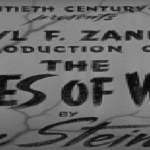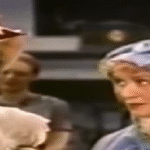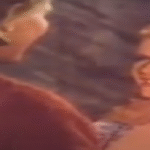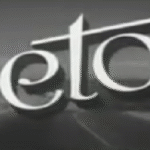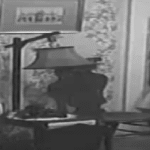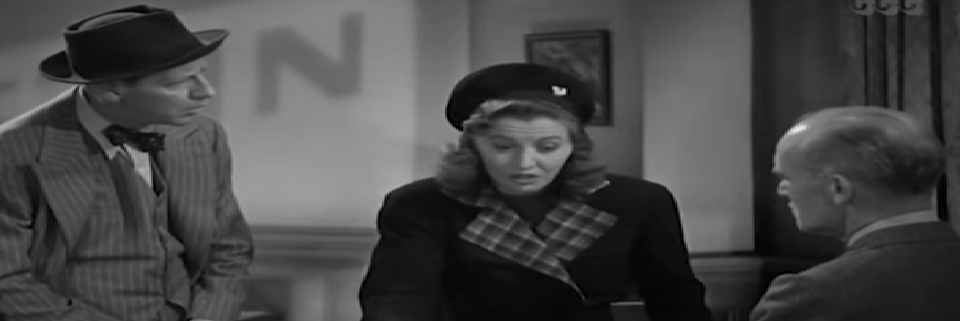‘Meet John Doe’ is a 1941 American drama directed by Frank Capra, starring Gary Cooper and Barbara Stanwyck. It is a stirring commentary on media manipulation, political ambition, and the yearning for community and justice during turbulent times. It blends romance, satire, and social critique, embodying Capra’s signature populist vision. Set against the backdrop of the Great Depression and the looming threat of fascism, the film follows the creation and evolution of a fictional everyman, “John Doe”, who inadvertently becomes the voice of the people.
The story begins in a newspaper office where Ann Mitchell (Barbara Stanwyck), a sharp and idealistic reporter, is about to be laid off after the newspaper is sold to a new publisher, the wealthy and politically motivated D.B. Norton (Edward Arnold). As a final act of defiance and to make a splash, Ann fabricates a letter to the editor from a fictional “John Doe,” a disgruntled, unemployed American who threatens to jump off the top of City Hall on Christmas Eve in protest of the world’s corruption, injustice, and general indifference to the common man.
The letter captures the public’s attention. Readers flood the paper with responses, concerned about John Doe and captivated by his message. Seeing the potential for a sensational story and possibly a public movement, the newspaper decides to capitalise on the deception. To give the fictional John Doe a face, they hire a real man to play the part.
Gary Cooper plays Long John Willoughby, a down-on-his-luck former baseball pitcher with a bum arm, who is chosen to portray John Doe. He’s hesitant at first but is enticed by a few dollars and the promise of a job. Under Ann’s guidance, Willoughby begins to embody the persona of John Doe. She writes his speeches, filled with homespun wisdom, common-sense ideals, and a plea for kindness, community, and decency.
What starts as a cynical media stunt grows into something much larger. Willoughby, as John Doe, delivers a radio address that resonates with the nation. His words strike a chord with ordinary Americans, and “John Doe Clubs” begin forming spontaneously across the country. These clubs, promoting goodwill and neighborly values, are non-political and non-religious, just citizens coming together for mutual support.
As the John Doe movement spreads, it becomes clear that people are hungry for connection, hope, and a voice. Willoughby, initially playing a part, begins to believe in the ideals he’s promoting. He becomes deeply conflicted, realizing the immense responsibility he has unwittingly taken on.
Meanwhile, D.B. Norton, the paper’s publisher, sees an opportunity. He manipulates the movement, planning to use it as a springboard for a political campaign. He wants to run for President with John Doe’s popularity as his foundation. Norton’s version of the movement twists the original message into a tool for control, patriotism tainted by demagoguery.
Ann, who is falling in love with Willoughby, begins to see the danger in what they’ve created. Her conscience is stirred, and she urges Willoughby to reveal the truth. But he’s caught, if he tells the public he’s not John Doe, the whole movement might collapse, and the people’s hope along with it.
At a massive rally organized by Norton, Willoughby intends to speak from the heart and expose the truth, but Norton sabotages him. The crowd is fed evidence that Willoughby is a fraud. Humiliated, betrayed, and feeling responsible for misleading millions, Willoughby vanishes. The movement collapses, and the public turns on him.
Depressed and desperate, Willoughby considers going through with the original suicide threat that started it all, jumping off the roof of City Hall on Christmas Eve. Ann finds him there, trying to talk him down. In a powerful emotional climax, she pleads with him not to give up, reminding him that the ideals of John Doe were real, even if the persona wasn’t. She tells him that people need John Doe, that he’s come to mean something truly important.
One by one, members of the original John Doe Club arrive, having realized that the message was more than just the man. They come to stand with him, affirming that while the movement was manipulated, the hope and unity it inspired were authentic.
Meet John Doe is deeply rooted in the political and social anxieties of its time. The film explores themes such as media manipulation , how easily public opinion can be swayed by false narratives and charismatic figureheads. Populism and political ambition, the way movements can be co-opted for power by those with ulterior motives. Despair and alienation, reflecting the disillusionment of the Great Depression, especially among the working class. Hope and human connection, a belief that change can happen through compassion, honesty, and collective action.
The story is an allegory warning against fascism and the dangers of blind hero worship, yet it also celebrates the resilience of the human spirit. The character of John Doe is a symbolic figure, an ordinary person representing everyone who feels voiceless and invisible in a vast, uncaring system.
The ending of the film is intentionally ambiguous. Willoughby does not jump, but he remains emotionally broken. The members of the John Doe Club surround him, offering hope and solidarity. It’s unclear what will happen next, but the message is clear: the spirit of John Doe lives on in everyone who believes in fairness, kindness, and community.
Frank Capra, known for his optimistic yet socially conscious films (It’s a Wonderful Life, Mr. Smith Goes to Washington), leaves the audience with a call to action, not to be swayed by cynical forces, but to uphold decency in the face of adversity.

